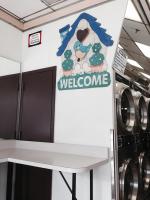SANTA FE SPRINGS, Calif. — Utilities are among a vended laundry’s greatest expenses, so it’s important to understand how to curb those costs through smart upgrades, maintenance and new equipment purchases. Oftentimes, small tweaks to your thermostat or washer programs can result in significant savings. Save even more by investing in new technology.
In Part 1, I listed equipment maintenance and replacement, model selection, and washer programming as ways to improve energy efficiency at your vended laundry. Read on for some more.
Efficient Lighting — LEDs in white light, general illumination applications are today’s most energy-efficient lighting technology, according to the U.S. Department of Energy (DOE). LEDs use up to 90% less energy and last up to 25 times longer than traditional incandescent bulbs.
You might also consider installing solar tubes. Solar tubes go through the roof, are sealed with a weatherproof plastic dome, and feature an interior-facing end with a diffuser that directs light into the laundry. During the day, they illuminate most spaces without the need for electrical power.
Ozone — The use of ozone with washers in a laundry can reduce water-heating costs because ozone works best in cool water. Ozone is a gas that’s introduced in the wash cycle. It relaxes fabric fibers and works with chemistry to remove dirt and stains, while sanitizing laundry. Using ozone, laundries can lower water-heating costs while standing apart from the competition.
A Programmable Thermostat — Programmable thermostats allow you to carefully control room temperature for every hour of the day, according to the DOE. You can save up to 10% a year on heating and cooling by simply turning your thermostat back 7 to 10 degrees F from its normal setting for eight hours a day.
Water Heater and HVAC Selection/Sizing — Consider replacing a less efficient water heater or HVAC system with a new, energy-efficient model. On-demand water heaters cost more than water heaters requiring storage but are less expensive to operate and take up considerably less space.
More traditional water heaters often require greater storage tank capacity. The tanks are full of hot water that is always heated to temperature. One reason they are less efficient than on-demand models is because of the constant loss of heat energy from the storage tank. If you have a traditional heating system with storage tanks, ensure your tank is well-insulated.
Don’t be fooled and choose equipment based only on price. Be sure to consider the total cost of ownership, including the purchase price, installation costs and operational utility costs over the life of a machine. Ensure you’re buying highly efficient equipment that pays for itself in time through years of lower utilities. At the end of the day, money saved on utilities translates to stronger profits and resale value.
Miss Part 1? You can read it HERE
Have a question or comment? E-mail our editor Bruce Beggs at [email protected].










